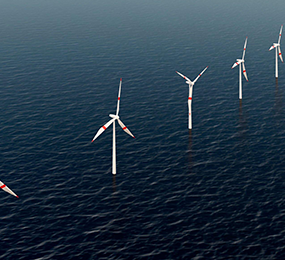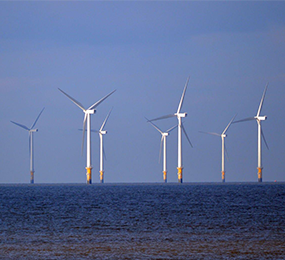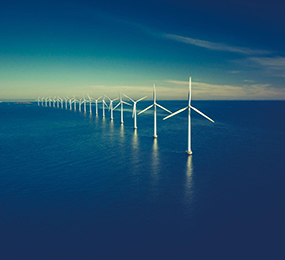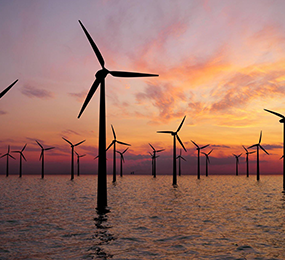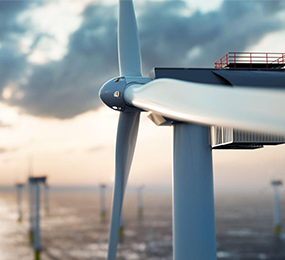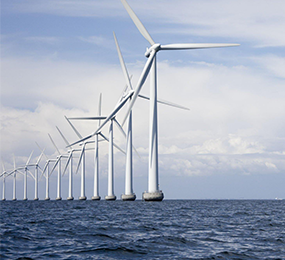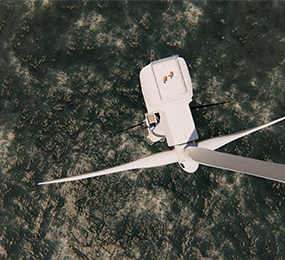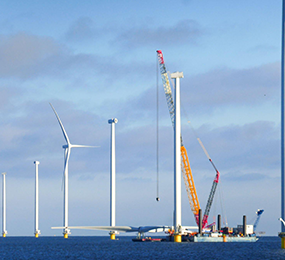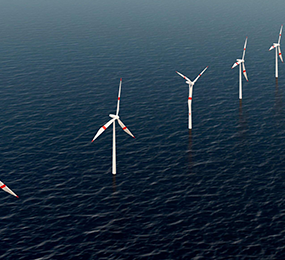Transport and Installation for Floating Offshore Wind
Installation technique from Floating to Floating
The Floating to Floating installation technique was created to address industrial difficulties such as effective use of resources such as steel and port infrastructure, offshore logistics and maintenance, and achieving the needed scale and rate of installation.
There are now many suggested solutions that entail building floating foundations (floaters) at port before wet-towing to the field. This poses logistical issues, as well as putting a strain on the number of available harbors.
As a result, an alternate approach has been created that does not need a wet-tow and eliminates the requirement for marshalling yards. Floaters can be built on land before being dry-towed to the spot using the floating to floating installation method. They will build a floating installation structure to hoist the floaters off the vessel once they arrive. Following that, they will be installed on-site. The floaters will be submerged by weight in a floating installation frame, eliminating the need for high-tech ballasting or tensioning systems and shortening installation time. Bottom foundation work can be completed concurrently by maximizing the capabilities of semi-submersible crane boats.
Providing a lesser cost
By eliminating the necessity for wet-towing, the volume and weight of the floaters are lowered. Furthermore, because the floater is lifted directly from the transportation vehicle in the field, both the floater and the wind turbine generator may be tuned specifically for in-place circumstances.
By incorporating installation needs such as ballasting provisions into reusable installation gear, a low-tech floater design is conceivable, eliminating the need to include these features into each floater.
lowering transportation and marshalling costs, as well as infrastructural needs
Transport and marshalling expenses are greatly lowered by efficiently employing space onboard transport boats to convey several floaters straight from the fabrication yard to the offshore wind site.
By eliminating the requirement for in-port assembly of the floater, less space and draught are required at the port, as well as decreased quayside capacity, which aids in avoiding one-time mega-investments in port regions.
Improving, more efficient, and predictable field delivery
Higher throughput on floating wind projects can be obtained by eliminating time-consuming and weather-sensitive wet tows and mooring connections. The floating to floating installation approach allows for the decoupling of floater and campaigns, minimizing supply-chain strain and resulting in a more efficient procedure.
The crane-supported floating to floating installation method is based on oil and gas floating platform industry established technology. It saves tons of steel each floater and reduces the whole project cost.
One of the most important components of coordinating supply and installation is determining the best delivery strategy for each project. There are many techniques for transporting wind farm components from operating locations to the floating wind farm site.
These are some examples:
1. Loading at a production port, conveying to, and unloading at a staging port for storage. Loading components into a transport vessel (or barge) at the manufacturer's factory and offloading into a floating barge in a protected harbor near the floating site, where they will be kept until the assembly process begins.
2. Towing the components using a floating tug vessel from the manufacturer's premises to the floating location.
3. It puts the mooring components straight onto the installation vessel (also known as a floating tug) at the manufacturer's facility and installs them.
Visit our website to know more: https://www.leadventgrp.com/events/3rd-annual-floating-wind-europe/details
Register for the forum and also add a schedule to your calendar.
For more information and group participation, contact us: [email protected]
Leadvent Group - Industry Leading Events for Business Leaders!
www.leadventgrp.com | [email protected]


